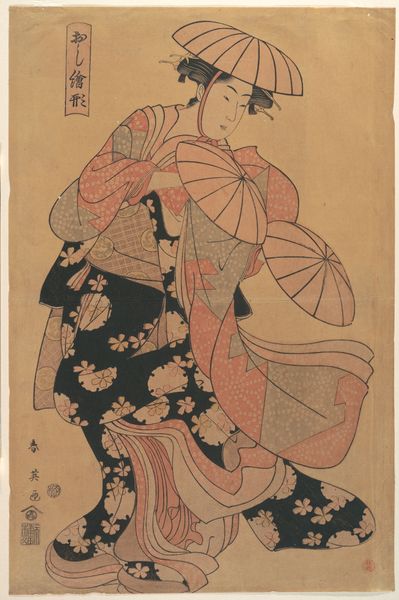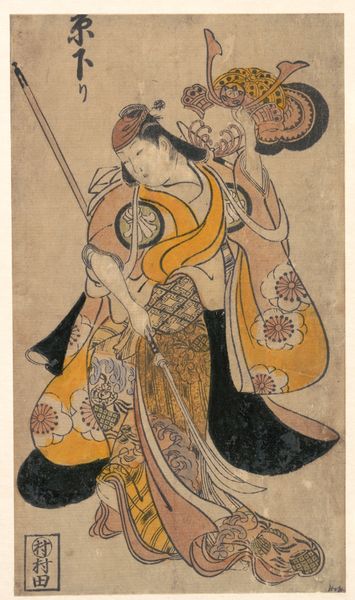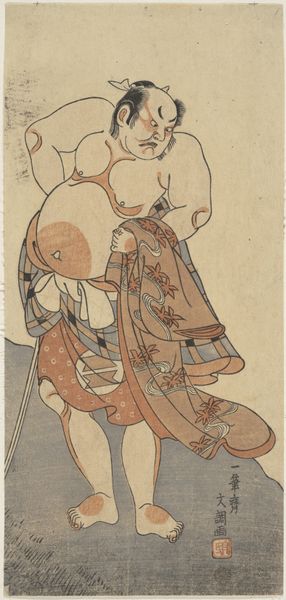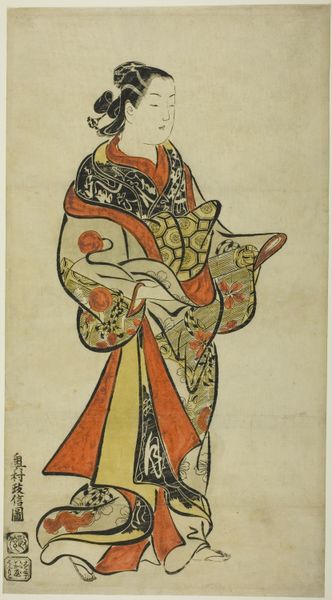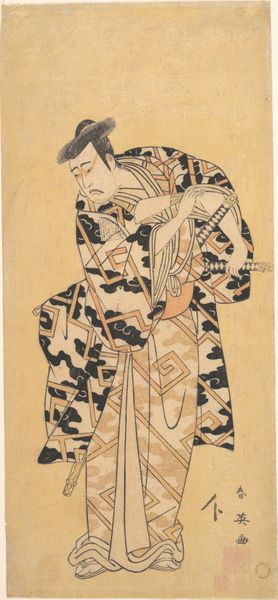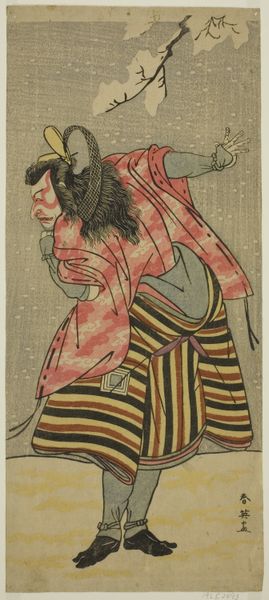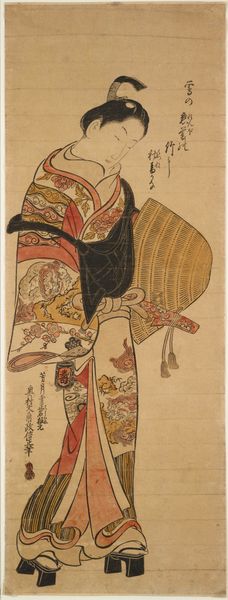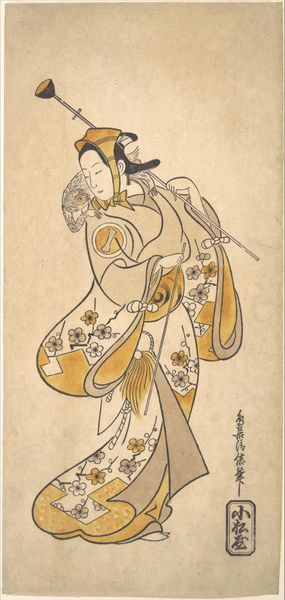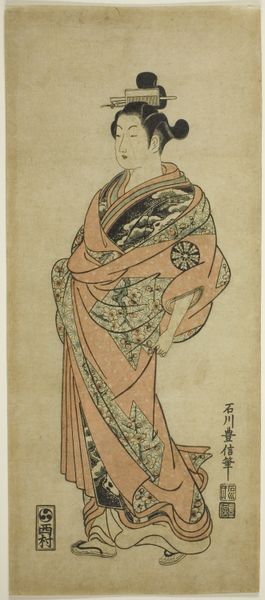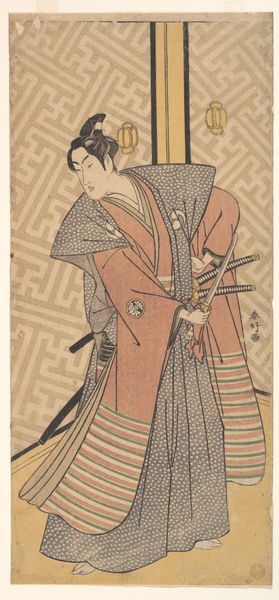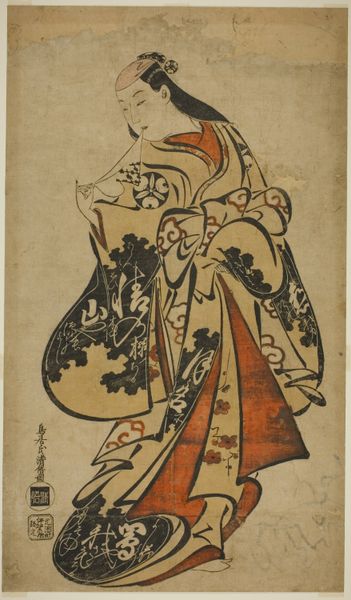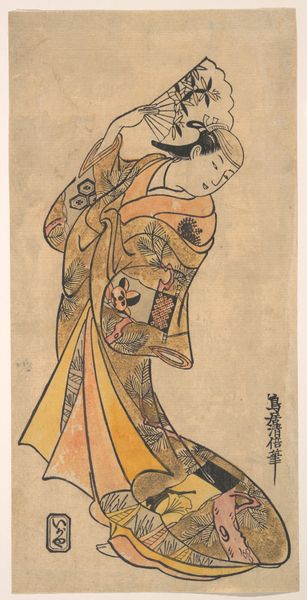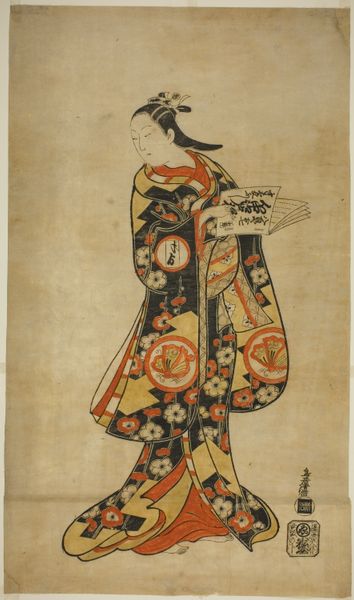
Actor Segawa Tomisaburo II as the Courtesan Toyama and Actor Ichikawa Kurizo as Higashiyama Yoshiwakamaru
0:00
0:00
print, woodblock-print
#
portrait
# print
#
asian-art
#
caricature
#
ukiyo-e
#
figuration
#
woodblock-print
#
erotic-art
Copyright: Public domain
Curator: What a compelling image. This woodblock print by Tōshūsai Sharaku features Actor Segawa Tomisaburo II as the Courtesan Toyama and Actor Ichikawa Kurizo as Higashiyama Yoshiwakamaru. It is currently held in the collection of the Metropolitan Museum of Art. Editor: The first thing that strikes me is the pose—such a deep, almost awkward bow, juxtaposed with the bright yellow background. It conveys a sense of tension, perhaps unease, despite the apparent formality of the subject. Curator: Precisely. Sharaku's prints were made during the Edo period, a time of strict social hierarchies. Kabuki theatre, while popular, often pushed against those boundaries, and Sharaku was known for his portraits of actors that revealed more than the idealized versions usually presented. Editor: And there’s so much that the image unpacks from a material perspective as well. It is interesting to consider the social context of kabuki theatre and how woodblock prints offered accessibility through this art form in that era, serving as a method of democratization, mass-producing what was once the domain of the elites. Curator: Definitely, the choice of medium speaks volumes about the production and consumption of art at the time. These prints were not unique pieces for the wealthy; they were produced for a wider audience. Woodblock printing allowed for a more democratic distribution of art, creating a kind of celebrity culture around these kabuki actors. Editor: You are absolutely right. This representation and dissemination would be unheard of for female-presenting bodies and in those times, offering a lens through which to question the limited opportunities for social elevation within gender and societal structures. Curator: The bold lines and flat planes of color typical of the ukiyo-e style also contribute to the visual impact. Notice how Sharaku emphasizes the patterned fabric and facial features, turning an actor into a caricature. Editor: And the tension again emerges; that element of the erotic, that hints at something just beneath the surface of formal beauty. I think you're spot on about the caricature aspect. There’s an element of both admiration and critique woven into the depiction, isn’t there? Curator: Indeed. He challenged the notion of ideal beauty by emphasizing distinctive, even exaggerated features, which must have sparked conversation when these prints hit the streets. Editor: Ultimately, that subversiveness and the clever execution makes it memorable. The portrait captures more than just actors in roles. It tells a story about societal structure. Curator: A powerful fusion of culture and history. Editor: Definitely food for thought!
Comments
No comments
Be the first to comment and join the conversation on the ultimate creative platform.
